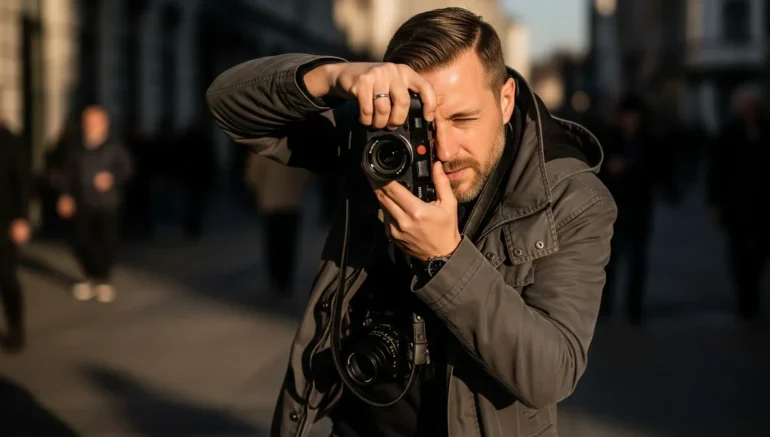
10 Inspiring Leica M10 Monochrome for Photographers
The leica M10 monochrome isn’t just a camera; it’s a tool that brings out the raw beauty of black and white photography. Without the distraction of color, this camera helps photographers focus on emotion, light, and detail. Each shot feels timeless and honest, giving even simple scenes a deeper meaning. If you’re into street, portrait, or everyday moments, the M10 Monochrome turns the ordinary into something bold and eye-catching. If you’re new to this camera or just need fresh ideas, this guide is here to inspire you.
In this article, you’ll find 10 creative ways to enjoy shooting with the leica M10 monochrome. These ideas are perfect for anyone looking to spark their imagination and push their photography further. Each tip is easy to try and doesn’t require a complicated setup, just your camera and a curious eye. You’ll learn how light, shadow, and texture can bring your shots to life. So, grab your camera, explore the ideas, and enjoy the unique power of black and white photography.
City Streets with Strong Shadows
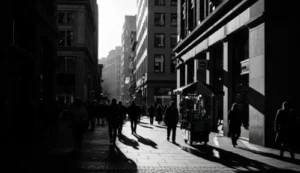 City streets are full of life, but when you strip away the color, something special happens. With the leica M10 monochrome, shadows and light become your main tools. Strong shadows can add drama, shape, and mystery to everyday scenes. Buildings, people walking, and even parked bikes can turn into bold outlines against light backgrounds. Try going out early in the morning or late in the afternoon, this is when shadows are longer and more defined. These hours also offer softer light that works well for black and white shots.
City streets are full of life, but when you strip away the color, something special happens. With the leica M10 monochrome, shadows and light become your main tools. Strong shadows can add drama, shape, and mystery to everyday scenes. Buildings, people walking, and even parked bikes can turn into bold outlines against light backgrounds. Try going out early in the morning or late in the afternoon, this is when shadows are longer and more defined. These hours also offer softer light that works well for black and white shots.
To make the most out of your city shots, pay attention to how the light hits surfaces around you. Walk slowly, look for shapes, and wait for interesting moments to happen. You don’t need a busy scene, sometimes, a single person walking through light can be strong. If you’re not sure where to start, here are a few simple tips:
- Look for leading lines like sidewalks or building edges to guide the eye.
- Shoot with the sun behind you to get long shadows in front of your subject.
- Try black clothes on people to make them stand out more in light areas.
- Find high spots like walkways or overpasses for a different view.
- Keep your settings simple, the M10 Monochrome works best when you focus on light and timing.
Quiet Portraits with Natural Light
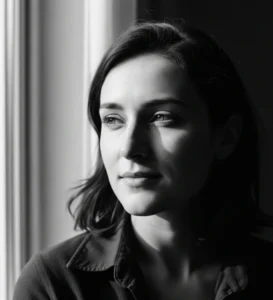 Portraits don’t always need rich colors or studio lights to feel strong. With the Leica M10 monochrome, you can take quiet, honest portraits using only natural light. Window light works well because it’s soft and helps bring out skin textures and facial details. This kind of lighting creates a peaceful mood, making your photos feel more personal and real. Position your subject near a window and try different angles to see how the light falls across the face. Soft shadows can add depth without making the photo feel too harsh.
Portraits don’t always need rich colors or studio lights to feel strong. With the Leica M10 monochrome, you can take quiet, honest portraits using only natural light. Window light works well because it’s soft and helps bring out skin textures and facial details. This kind of lighting creates a peaceful mood, making your photos feel more personal and real. Position your subject near a window and try different angles to see how the light falls across the face. Soft shadows can add depth without making the photo feel too harsh.
To get the most out of natural light, pay attention to time and direction. Early morning and late afternoon usually give the softest glow. Avoid direct sunlight on the face, as it can cause hard shadows or make your subject squint. Natural light also works great when paired with simple backgrounds and relaxed poses. Try these helpful tips:
- Use a north-facing window for soft, even lighting throughout the day.
- Ask your subject to sit at an angle to the light to add soft shadows.
- Keep the background simple to make the face the focus.
- Don’t over-edit, let the textures and tones shine on their own.
- Talk to your subject to keep them relaxed and natural during the shoot.
Old Buildings and Textures Up Close
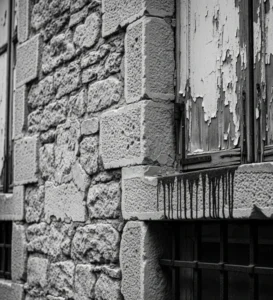 Old buildings carry so much character, from cracked walls and peeling paint to rusted metal and worn-out bricks. With the leica M10 monochrome, you can bring out these details in a way that color photos often can’t. Black and white highlights texture, patterns, and contrast, turning simple surfaces into something more interesting. Getting close allows you to focus on fine details that many people usually overlook. It’s not about showing the whole building; it’s about telling a story through its parts.
Old buildings carry so much character, from cracked walls and peeling paint to rusted metal and worn-out bricks. With the leica M10 monochrome, you can bring out these details in a way that color photos often can’t. Black and white highlights texture, patterns, and contrast, turning simple surfaces into something more interesting. Getting close allows you to focus on fine details that many people usually overlook. It’s not about showing the whole building; it’s about telling a story through its parts.
When shooting up close, light and angle make a big difference. Soft side lighting helps bring out rough textures and shadows that add depth. You can shoot at different times of the day to see how shadows fall on the surface. Explore alleys, old streets, and forgotten buildings, they’re full of hidden photo spots. Here are some easy tips to try:
- Use a wide aperture if you want to blur the background and focus on details.
- Shoot at an angle to bring out the depth and cracks in walls.
- Look for repeating patterns like bricks, tiles, or wood grains.
- Use natural side lighting to add texture without washing out details.
- Get closed, don’t be afraid to fill the frame with just one part of the building.
Candid Moments That Feel Real
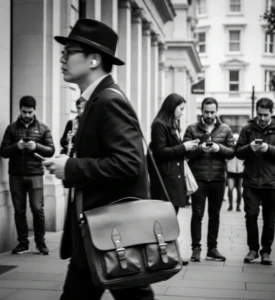 Candid photos show people as they are, natural, unposed, and full of real emotion. With the leica M10 monochrome, these moments can feel even more effective. Without color, you focus more on expressions, body language, and light. Regardless of its someone is laughing, walking, or lost in thought, black and white brings a sense of truth and timelessness. These kinds of shots often happen quickly, so it’s helpful to be ready and observant. Blending in with the scene and keeping your distance can help you catch those honest moments.
Candid photos show people as they are, natural, unposed, and full of real emotion. With the leica M10 monochrome, these moments can feel even more effective. Without color, you focus more on expressions, body language, and light. Regardless of its someone is laughing, walking, or lost in thought, black and white brings a sense of truth and timelessness. These kinds of shots often happen quickly, so it’s helpful to be ready and observant. Blending in with the scene and keeping your distance can help you catch those honest moments.
The key to good candid photos is patience and timing. Move slowly, don’t interrupt the moment, and let things happen naturally. Backgrounds also make-clean spaces or soft blurs can help highlight your subject better. Try different angles and distances until the scene feels balanced. Here are some simple tips to help you shoot better candid:
- Use a quiet shutter mode to avoid drawing attention.
- Keep your camera ready with the right settings for the light.
- Look for small actions like eye contact, gestures, or movement.
- Stand back and let people act naturally, avoid asking them to pose.
- Use light and shadow to frame the subject and add mood.
Morning Fog and Gentle Light
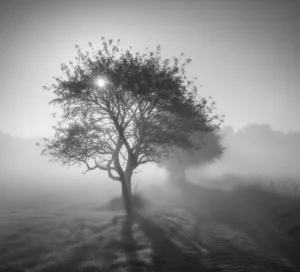 Morning fog creates a soft, quiet mood that works beautifully in black and white. With the leica M10 monochrome, you can turn a simple foggy scene into something dreamlike and emotional. The lack of color allows you to focus on how the light spreads, how the fog blurs the background, and how shapes appear softer and more mysterious. Early hours are the best time to shoot because the light is gentle and spreads evenly through the mist. Trees, streets, and even people walking in the distance all gain a calm, peaceful feeling in the fog.
Morning fog creates a soft, quiet mood that works beautifully in black and white. With the leica M10 monochrome, you can turn a simple foggy scene into something dreamlike and emotional. The lack of color allows you to focus on how the light spreads, how the fog blurs the background, and how shapes appear softer and more mysterious. Early hours are the best time to shoot because the light is gentle and spreads evenly through the mist. Trees, streets, and even people walking in the distance all gain a calm, peaceful feeling in the fog.
To take full advantage of these conditions, slow down and take time to study how the fog changes the scene. Try different angles to find the right mix of light, shadow, and shape. Use simple compositions to let the mood come through. You don’t need a lot in the frame, sometimes, less is more when it comes to fog photography. Here are some helpful tips to guide your shots:
- Shoot during early morning for soft light and thick fog.
- Use manual focus if the fog makes autofocus struggle.
- Keep your composition simple to avoid cluttered scenes.
- Look for silhouettes like trees, people, or buildings.
- Use a tripod if the light is low and you want sharper results.
Bold Shapes and Clean Lines
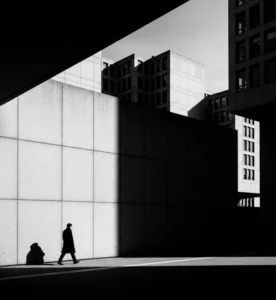 Black and white photography brings out the strength of shapes and lines in a way color can’t. The leica M10 monochrome is perfect for this style because it highlights contrast, structure, and form. When you focus on bold shapes, like the curves of a building, a stairway, or even shadows cast on the ground, you can create strong and striking images. Clean lines give the photo balance and make it easier for the viewer’s eye to follow the scene. This style works well in urban spaces where buildings, roads, and signs create natural patterns.
Black and white photography brings out the strength of shapes and lines in a way color can’t. The leica M10 monochrome is perfect for this style because it highlights contrast, structure, and form. When you focus on bold shapes, like the curves of a building, a stairway, or even shadows cast on the ground, you can create strong and striking images. Clean lines give the photo balance and make it easier for the viewer’s eye to follow the scene. This style works well in urban spaces where buildings, roads, and signs create natural patterns.
To get the best results, think of your photo as a design made with light and shadow. Find simple scenes that stand out because of their structure, not because of color. Keep your framing tight and avoid busy backgrounds that can distract from the shape. Try moving around your subject until the lines look balanced. Here are a few easy tips to help:
- Look for patterns like fences, staircases, or road markings.
- Shoot during glowing light to get stronger shadows and contrast.
- Use leading lines to guide the viewer’s eye across the photo.
- Frame tightly to make shapes and lines stand out more.
- Keep the background simple so your subject stays clear and bold.
High-Contrast Scenes That Pop
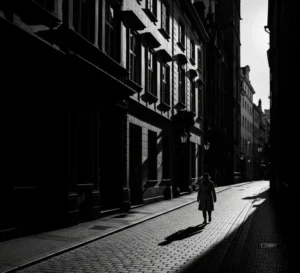 High-contrast scenes are one of the strengths of the leica M10 monochrome. This camera picks up the bold difference between light and dark, turning simple moments into eye-catching images. Shadows become deeper, highlights become brilliant, and the photo gains a strong sense of depth. You don’t need fancy setups, just look for sunlight hitting a wall, a person walking through a beam of light, or a dark object against a clear sky. These scenes often feel dramatic and full of life, even without color.
High-contrast scenes are one of the strengths of the leica M10 monochrome. This camera picks up the bold difference between light and dark, turning simple moments into eye-catching images. Shadows become deeper, highlights become brilliant, and the photo gains a strong sense of depth. You don’t need fancy setups, just look for sunlight hitting a wall, a person walking through a beam of light, or a dark object against a clear sky. These scenes often feel dramatic and full of life, even without color.
To shoot high-contrast scenes, timing and light are everything. Midday sun works best for hard shadows, but even indoor light near windows can create contrast. Use these moments to highlight shapes, emotions, or interesting angles. Keep the photo clean so the contrast doesn’t get lost in clutter. Try these simple tips when you’re aiming for that bold, popping effect:
- Shoot when sunlight is strong for clear highlights and shadows.
- Place your subject near light or dark surfaces to boost contrast.
- Use black clothing or dark backgrounds for luminated subjects
- Watch your exposure so highlights don’t get blown out.
- Frame tight to make the contrast stand out even more.
Still Life with a Classic Look
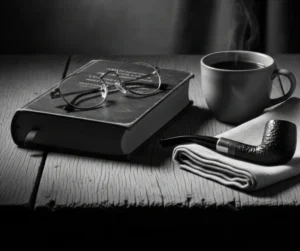 Still life photographers may seem simple, but it gives you full control over light, shape, and mood. With the leica M10 monochrome, black and white still life photos take on a timeless, classic feel. Everyday objects like fruit, books, cups, or flowers can look elegant when arranged with care. The lack of color lets the viewer focus on textures, shadows, and placement. You don’t need a lot of space, just a clean surface near a window and a few items with interesting shapes or textures.
Still life photographers may seem simple, but it gives you full control over light, shape, and mood. With the leica M10 monochrome, black and white still life photos take on a timeless, classic feel. Everyday objects like fruit, books, cups, or flowers can look elegant when arranged with care. The lack of color lets the viewer focus on textures, shadows, and placement. You don’t need a lot of space, just a clean surface near a window and a few items with interesting shapes or textures.
What makes life work well in black and white is soft lighting and smart composition. Try using side light to show depth and shadow and keep your background simple so the subject stands out. You can also play with objects that have different surfaces, like something rough next to something smooth. Think of it like building a quiet story with objects. Here are a few easy tips to try:
- Use natural light from the side to create soft shadows.
- Choose objects with strong shapes or textures.
- Keep the background clean to avoid distractions.
- Shoot from above or straight on depending on the object.
- Group items in odd numbers (like 3 or 5) for better balance.
Reflections in Water or Glass
 Reflections add a unique and artistic touch to black and white photography. With the leica M10 monochrome, reflections in water or glass can create beautiful patterns, shapes, and symmetry. They also add depth to your photos, making simple scenes look more layered and interesting. Even if it’s a puddle on the street, a calm lake, or a shop window, reflections can double your subject or show a different point of view. These moments can be quiet, surprising, or even abstract, depending on how you frame them.
Reflections add a unique and artistic touch to black and white photography. With the leica M10 monochrome, reflections in water or glass can create beautiful patterns, shapes, and symmetry. They also add depth to your photos, making simple scenes look more layered and interesting. Even if it’s a puddle on the street, a calm lake, or a shop window, reflections can double your subject or show a different point of view. These moments can be quiet, surprising, or even abstract, depending on how you frame them.
To get better reflection shots, pay attention to angles and light. A small change in position can completely change how the reflection looks. Still water works best for clearer results, while ripples can give a dreamy effect. Try to mix light and dark areas in your frame to add contrast. Here are some useful tips for getting great results:
- Look for reflections early or late in the day when light is softer.
- Get low to the ground when shooting water for stronger reflections.
- Try reflections in windows to combine the inside and outside view.
- Use contrast by including both dark and light areas in your shot.
- Keep your frame simple so the reflection becomes the focus.
Wide Views with a Story to Tell
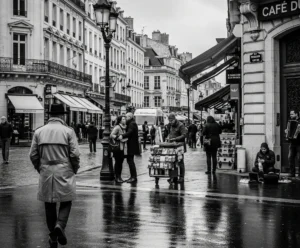 Wide shots let you show more of the scene, giving your photo a sense of place and mood. With the leica M10 monochrome, black and white wide views feel clean, bold, and often emotional. These images work well when there’s a story to share, like a person walking alone on a road, a busy market, or a quiet landscape. The wide frame helps guide the viewer’s eye and lets them explore the small details. You don’t need a lot of action; even a calm scene can feel capable if it’s well composed.
Wide shots let you show more of the scene, giving your photo a sense of place and mood. With the leica M10 monochrome, black and white wide views feel clean, bold, and often emotional. These images work well when there’s a story to share, like a person walking alone on a road, a busy market, or a quiet landscape. The wide frame helps guide the viewer’s eye and lets them explore the small details. You don’t need a lot of action; even a calm scene can feel capable if it’s well composed.
To make wide views more meaningful, think about what you want to show and why. Try using leading lines, strong foregrounds, or interesting skies to give your photo depth. Avoid filling the frame with too many things, keep it focused and intentional. Black and white wide shots often look better when there’s a mix of light, shadow, and texture. Here are a few tips to help bring out the story in your wide shots:
- Use leading lines like roads, fences, or paths to guide the viewer.
- Include a subject like a person or object to give scale.
- Shoot during golden hour for soft light and long shadows.
- Keep the horizon straight for a clean, balanced frame.
- Think about the mood, what feeling do you want the viewer to get?
Conclusion
The leica M10 monochrome brings out a different kind of beauty in photography, pure, raw, and full of emotion. Every image tells a story without the need for color, focusing only on light, shadow, and detail. Many photographers say it’s like seeing the world in a new way, where every frame feels timeless. If you’re someone who loves black and white photography, this camera might just change how you shoot forever. Have you ever tried shooting in monochrome? Share your thoughts or experiences in the comments, we’d love to hear from fellow creatives.
Read Next: 5 Benefits of Professional E-Commerce Product Photography





